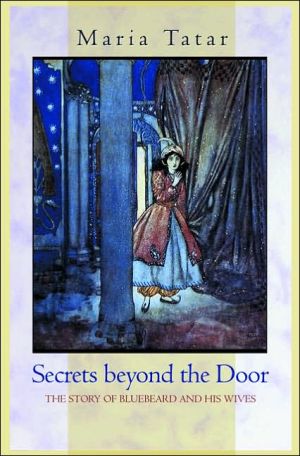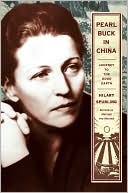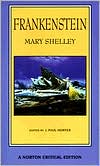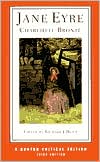Secrets beyond the Door: The Story of Bluebeard and His Wives
The tale of Bluebeard's Wife—the story of a young woman who discovers that her mysterious blue-bearded husband has murdered his former spouses—no longer squares with what most parents consider good bedtime reading for their children. But the story has remained alive for adults, allowing it to lead a rich subterranean existence in novels ranging from Jane Eyre to Lolita and in films as diverse as Hitchcock's Notorious and Jane Campion's The Piano.\ In this fascinating work, Maria Tatar...
Search in google:
"Learned. Readable. Entertaining. This is a fascinating exploration of a story that in one sense never changes, but at the same time is always changing, illuminating shifting cultural attitudes about marriage, secrecy, enterprising women and withheld men. Tatar has produced a vivid kaleidoscope of curious women and the mistrust they arouse."--Nina Auerbach, University of Pennsylvania"A brisk, often breezy survey of one of the foundational stories of modern culture and its sexual mythologies. Tatar's book traces the changing, but still robust, reputation of Bluebeard's wife from its first wide dissemination in fairy tale and folklore to its later reworkings in literature, film, opera and cultural criticism. Tatar herself has been indefatigably curious in collecting various versions of the tale and in sighting otherwise almost invisible references to Bluebeard and his wife in contemporary literature."--Maria DiBattista, Princeton UniversityChoiceA respected critic of fairy tales, Tatar takes on Bluebeard and the result is a deeply resonant, fascinating study of intertextuality. . . . [S]he persuasively demonstrates how the Bluebeard tale shifts its shape century by century, revealing the secret anxieties of the age regarding sexuality, coming of age, romance, marriage, and marital discord.
Secrets beyond the Door\ The Story of Bluebeard and His Wives \ \ By Maria Tatar \ Princeton University Press\ Princeton University Press\ All right reserved.\ ISBN: 0-691-12783-2 \ \ \ Chapter One\ THE ATTRACTIONS OF "BLUEBEARD": THE ORIGINS AND FORTUNES OF A FOLKTALE \ You had the sense to see you were caught in a story, and the sense to see that you could change it to another one ... for many things may and do happen, stories change themselves, and these stories are not histories and have not happened. -A. S. Byatt, "The Story of the Eldest Princess"\ There are only two or three human stories," Willa Cather once declared, "and they go on repeating themselves fiercely as if they had never happened before." Although each of us might have different candidates for those two to three tales, many of us would come up with the usual suspects: the stories of Oedipus or Hamlet, Eve or Cassandra, Odysseus or Jack, Cinderella or Snow White. Much has been written about the seemingly timeless and universal nature of these master narratives, which we encounter in print, on screen, and in performance as poems, myths, films, operas, fairy tales, and plays. Yet the stories rarely repeat themselves, certainly not word for word, but often not even idea for idea. Instead they are constantly altered, adapted, transformed, and tailored to fit new cultural contexts. They remain alive precisely because they are never exactly the same,always doing new cultural work, mapping out different developmental paths, assimilating new anxieties and desires, giving us high pathos, low comedy, and everything in between.\ If Cather recognized the resilience of certain tales, she also implied that we are doomed to endlessly repeat history through certain plots. But if we tell one of these "human stories"-say, Cinderella or Jack and the Beanstalk-to someone from another part of the world, it quickly becomes evident that traditional tales exist in many different versions, in at least as many versions as there are cultures and in perhaps as many versions as there are people who know the tale. Fairy tales, for example, have an extraordinary cultural elasticity, rarely repeating themselves even when recited verbatim from a book-every voice puts a new inflection on each episode. Their expansive range and imaginative play are so powerful that they never seem to bore us. Italo Calvino once said of storytelling that the tale is beautiful only when something is added to it. Each telling of the story seems to recharge its power, making it crackle and hiss with renewed narrative energy. Or as Tolkien put it, drawing on a different metaphorical regime, "the Cauldron of Story has always been boiling, and to it have continually been added new bits, dainty and undainty."\ This book focuses on one of the tenacious cultural stories to which Cather refers, showing how it has repeated itself but also reinvented itself over the course of the past centuries, taking unexpected twists and turns as it makes its way into different cultural settings. "Bluebeard," a tale that is now found between the covers of fairy-tale collections for children, began as adult entertainment, and although it seems to have fallen into a cultural black hole, it has left profound traces on our cultural memory. Even if many of us are supremely unaware of it as story-we may not be able to reproduce it the way that we can recite Hamlet's dilemmas or identify the rivalries dividing Cinderella's household-we are familiar with many of its chief ingredients: a barbaric husband, a curious wife, a forbidden chamber, a blood-stained key, and corpses in the closet.\ The Bluebeard plot, in its standard folkloric form, features a sinister figure whose wealth wins him the hand of two sisters, each of whom mysteriously disappears. The third and youngest in the trio of young women reluctantly marries Bluebeard, who arranges a test of her fidelity when he hands over the keys to all the rooms in his mansion but expressly forbids entering one remote chamber. As soon as Bluebeard leaves for an extended journey, his wife rushes to the forbidden chamber, opens the door, and finds the corpses of her husband's previous wives. A stained key, a blood-spattered egg, a withered flower, or a bruised apple betray the wife's transgression to the husband, who, in a murderous rage, is about to behead his wife, when her brothers come to the rescue and cut Bluebeard down with their swords.\ The story of Bluebeard and his wife has a cultural edge so sharp that it continues to be recast, rewritten, and reshaped even though the name "Bluebeard" often elicits a blank stare or an erroneous association with piracy on the high seas (the wealthy Frenchman is often confused with the seafaring Blackbeard). Despite the prominent position that "Bluebeard" occupies in the cultural archive of the West-the number of writers and artists with Bluebeard skeletons in their closets is staggering-most adults seem only dimly aware of the plot outlines of the story. Dismissed as an obscure tale belonging to another time and place, it seems of little more than antiquarian interest.\ How do we account for the way in which "Bluebeard" has kept so powerful a hold on our imagination, yet at the same time fallen into cultural oblivion? Charles Dickens offers a clue in his childhood memories of a story called "Captain Murderer," which was told to him by a nursemaid incongruously named Mercy. This Captain Murderer, as the adult Dickens realized, was an "offshoot of the Blue Beard family," and he terrorized the young Dickens over a period of many years. That "Captain Murderer" was not really a story for children becomes evident in Dickens's account of his response to its telling:\ Hundreds of times did I hear this legend of Captain Murderer, in my early youth, and added hundreds of times was there a mental compulsion upon me in bed, to peep in at his window as the dark twin peeped, and to revisit his horrible house, and look at him in his blue and spotty and screaming stage, as he reached from floor to ceiling and from wall to wall. The young woman who brought me acquainted with Captain Murderer had a fiendish enjoyment of my terrors, and used to begin, I remember-as a sort of introductory overture-by clawing the air with both hands, and uttering a long low hollow groan. So acutely did I suffer from this ceremony in combination with this infernal Captain, that I sometimes used to plead I thought I was hardly strong enough and old enough to hear the story again just yet. But, she never spared me one word of it.\ "Bluebeard" is one of those stories that did not travel well in the great eighteenth-century migration of fairy tales from the fireside and parlor to the nursery. "The ugly story of the famous or infamous French Count" should be "cast out of the society of fairy-stories," Aline Kilmer declared. "It is not folklore but yellow-journalism." A tale that centers on marriage and focuses on the friction between one partner who has something to hide and another who wants to know too much, it did not prove attractive to tale collectors, who were eager to assemble stories that would appeal to adult sensibilities about what was appropriate reading for children. And so while "Bluebeard"-an anomaly among "Little Red Riding Hood," "Cinderella," and "Jack and the Beanstalk"-got lost on its way from adult storytelling cultures to children's books, the tale managed to lead a powerful literary afterlife without our ever being fully aware that its constituent parts belong to a narrative whole.\ In his autobiography Black Boy, Richard Wright tells us exactly why "Bluebeard" is a story that has refused to go away. "Once upon a time there was an old, old man named Bluebeard." These are the words read by a "colored schoolteacher" named Ella from a book containing a story called "Bluebeard and His Seven Wives." In this coming-of-age portion of Wright's autobiography, we learn how the folktale about Bluebeard introduces the boy growing up in the Jim Crow South to the world of adult secrets and intrigue. The European folktale about Bluebeard elicits what is described as a "total emotional response." When Wright's grandmother cuts the narrative short, denouncing the tale as "Devil's work," the boy is distraught. "I hungered for the sharp, frightening, breath-taking, almost painful excitement that the story had given me." The "whispered story of deception and murder" feeds a "thirst for violence" and "for intrigue, for plotting, for secrecy, for bloody murders."\ What Wright discovers as a boy is that narrative can elicit a somatic response, sending a chill up his spine and taking his breath away. Nothing is as irresistible as melodrama, and the "Devil's work" has always proved more compelling than pious feelings and saintly behavior. "Bluebeard and His Seven Wives," with its solemn mysteries, grim carnage, and damsel in distress, produces the suspense of all stories in which an enigma about a killer must be solved by one of his potential victims. And by casting the killer as husband and the victim as wife, it adds the ingredients of intimacy, vulnerability, trust, and betrayal to make the story all the more captivating.\ It is above all the pathology of the husband-"intrigue," "plotting," "secrecy," and "murder"-that captures the young Wright's attention. "Bluebeard and His Seven Wives" fascinates because it stages secret anxieties and desires taken to a criminal extreme-anxieties and desires that are foreign yet also fascinating to those on the threshold of becoming adults. Beyond that, it produces in exaggerated terms what the young often long for in literature, and sometimes in life as well: not Wordsworth's sweet serenity of books but the excitement and revelation that keep them on the edge of their seats while they are reading.\ "Bluebeard" and its variants enjoyed widespread circulation in European cultures, and the tale is broadly disseminated in England, France, Germany, Italy, and Scandinavian countries, even reaching into Slavic traditions. Via trade routes, the story found its way to Africa, India, and Jamaica, where Bluebeard sported beards of different hues, sometimes red, occasionally green, and even blond. In Italy Bluebeard is a devil who hires young women to do his laundry; in Germany he is a sinister wizard who dismembers his brides; in Norway he is a mountain troll who twists off the heads of women who spurn his advances. It was in France that the story seems to have originated and taken particular hold, and Paul Delarue, in his magisterial study of French folktales, lists dozens of versions of the tale.\ Margaret Atwood once warned that we should never ask for the "true story," for it is always "vicious and multiple and untrue." Nothing could be closer to the truth about folklore. When it comes to folktales, there is no authoritative, original version. We have only variants, "multiple" and "untrue," each unfaithful to the previous telling and inflecting the plot in a slightly different way. And yet all these variants-oral, literary, or a hybrid of the two-can lay claim to unwavering fidelity to their own time and place. As Italo Calvino put it, while he was preparing Italian Folktales for publication, "I too have the right to create variants." In every sense, we are right to perpetually reinvent the story, for the true one fails to ring true to our cultural values. "Why do you need it?" Atwood shrewdly asks.\ And yet understanding how "Bluebeard" has engaged in shape shifting over the centuries challenges us to think about the ways in which stories that we think of as "timeless" and "universal" constantly have to reinvent themselves in order to ensure their survival. For that reason, I want to look at multiple untrue stories that have emerged over the past three centuries. I begin with Charles Perrault's "La Barbe Bleue," for no other Bluebeard story has been invested with as much cultural authority as this French variant from Tales of Mother Goose (1697).\ CHARLES PERRAULT'S "BLUEBEARD" AND ITS LESSONS\ "Bluebeard" made its literary debut in a collection that drew on a culture of oral storytelling for adults to craft stories that would appeal to children. For the peasants who distracted themselves from the monotony of manual labor through gossip, banter, and tale telling, "Bluebeard" did not fall short of the entertainment mark. In an age without radios, televisions, or other electronic diversions, farm laborers and household workers demanded fast-paced narratives with heavy doses of burlesque comedy, high drama, scatological humor, and freewheeling violence. "Bluebeard" seems to have escaped the heavy editing to which Perrault and the Grimms had subjected stories like "Little Red Riding Hood" and "Rapunzel" (the one story had featured a striptease performed for a lecherous wolf, the other a young woman wondering why her clothes were too tight after indulging in daily romps with a prince up in her tower). Perrault's "Bluebeard" retained the dark mystery, suspense, and horror of versions told by adults to other adults around the fireside. It does not mince its words about the bloodied bodies in Bluebeard's chamber of horrors and invests much of its narrative energy in exposing the title figure's wife to terrors of extraordinary vividness and power.\ Just who was Bluebeard and how did he get such a bad name? As Anatole France reminds us in his story "The Seven Wives of Bluebeard," Charles Perrault composed "the first biography of this seigneur" and established his reputation as an "accomplished villain" and the "most perfect model of cruelty that ever trod the earth." Cultural historians have been quick to claim that Perrault's "Bluebeard" is based on fact, that it broadcasts the misdeeds of various noblemen, among them Cunmar of Brittany and Gilles de Rais. But neither Cunmar the Accursed, who decapitated his pregnant wife, Triphine, nor Gilles de Rais, the marshal of France who was hanged in 1440 for murdering hundreds of children, presents himself as a definitive model for Bluebeard, though both were frequently invoked in nineteenth-century pantomimes and plays to assure audiences that there was a certain historical truth to the fairy-tale tyrant, and they continue to act as narrative magnets when the story is retold. With his ghoulish forbidden chamber and his magical key that betrays intruders, Bluebeard remains a figure constructed as a collective fantasy, even if some of his features are drawn from bits and pieces of historical realities that embed themselves in the folk narrative. Like the Russian Baba Yaga, the British giants, the glaestigs of the Scottish Highlands, or the rakshasas of India, he is firmly anchored in the domain of folkloric fright.\ Perrault's "Bluebeard" recounts the story of a man's courtship and his marriage to a young woman whose desire for wealth conquers her feelings of revulsion for blue beards. After a month of married life, Bluebeard declares his intention to undertake a journey. In a seemingly magnanimous gesture, he gives his new bride keys that will open the rooms of the mansion and provide unlimited access to strongboxes holding gold and silver and to caskets filled with jewels. But he is not willing to share everything. Handing over the key to a small, remote chamber, he tells his wife: "Open anything you want. Go anywhere you wish. But I absolutely forbid you to enter that little room, and if you so much as open it a crack, there will be no limit to my anger."\ "Plagued by curiosity," Bluebeard's wife does not wrestle long with her conscience: "The temptation was so great that she was unable to resist it." She opens the door to the forbidden chamber and finds a pool of clotted blood in which are reflected the bodies of Bluebeard's dead wives, hanging from the wall. Horrified, she drops the key and is unable to remove the telltale bloodstain left on it. Bluebeard returns home to discover the evidence of his wife's transgression and is about to execute her for her act of disobedience, when his wife's brothers, summoned by "Sister Anne" (who has evidently been in the mansion all along), come to the rescue and cut him down with their swords.\ (Continues...)\ \ \ \ \ Excerpted from Secrets beyond the Door by Maria Tatar Excerpted by permission.\ All rights reserved. No part of this excerpt may be reproduced or reprinted without permission in writing from the publisher.\ Excerpts are provided by Dial-A-Book Inc. solely for the personal use of visitors to this web site. \ \
List of IllustrationsxiIntroduction1Chapter 1The Attractions of "Bluebeard": The Origins and Fortunes of a Folktale11Chapter 2"Have you ever really been afraid?...of a man?...of a house?...of yourself?": Charlotte Bronte's Jane Eyre, Daphne du Maurier's Rebecca, and Modern Gothics67Chapter 3Investigative Pleasures: Bluebeard's Wife in Hollywood89Chapter 4Rewriting "Bluebeard": Resisting the Cult of Death108Chapter 5Monstrous Wives: Bluebeard as Criminal and Cultural Hero132Chapter 6The Art of Murder: Bluebeard as Artist and Aesthete152Epilogue169AppendixCultural Variants of "Bluebeard"175"Bluebeard"175"The Robber Bridegroom"179"Fitcher's Bird"182"Mr. Fox"185"How the Devil Married Three Sisters"187"The Hen Is Tripping in the Mountain"190"The White Dove"194"Mr. Fox"198"How the Helpmate of Blue-Beard Made Free with a Door"202"Blue-Beard's Closet," 1861205Untitled Bluebeard Sonnet207Notes209Bibliography225Primary Literature225Secondary Literature229Films239Index241
\ The American Scholar - Alison Lurie\ In this fine book, which both scholars and ordinary readers enjoy, as I did, [Tatar] casts her net wide. She reprints several versions of 'Bluebeard,' and discusses not only these tales and their many variants, but also the reappearance of the story in fiction, film, opera, and poetry.\ \ \ \ \ Harper's - John Leonard\ Secrets beyond the Door is full of transmutations and sublimations. Harvard professor Maria Tatar . . . returns with a scintillating account of what generations of high and low culture have done to the Bluebeard folktale.\ \ \ Foreword MagazineA book that unlocks the reasons of transgression in the chambers of the mind.\ \ \ \ \ ChoiceA respected critic of fairy tales, Tatar takes on Bluebeard and the result is a deeply resonant, fascinating study of intertextuality. . . . [S]he persuasively demonstrates how the Bluebeard tale shifts its shape century by century, revealing the secret anxieties of the age regarding sexuality, coming of age, romance, marriage, and marital discord.\ \ \ \ \ Harper'sSecrets beyond the Door is full of transmutations and sublimations. Harvard professor Maria Tatar . . . returns with a scintillating account of what generations of high and low culture have done to the Bluebeard folktale.\ — John Leonard\ \ \ \ \ Foreword MagazineA book that unlocks the reasons of transgression in the chambers of the mind.\ — Alex Moore\ \ \ \ \ The American ScholarIn this fine book, which both scholars and ordinary readers enjoy, as I did, [Tatar] casts her net wide. She reprints several versions of 'Bluebeard,' and discusses not only these tales and their many variants, but also the reappearance of the story in fiction, film, opera, and poetry.\ — Alison Lurie\ \








